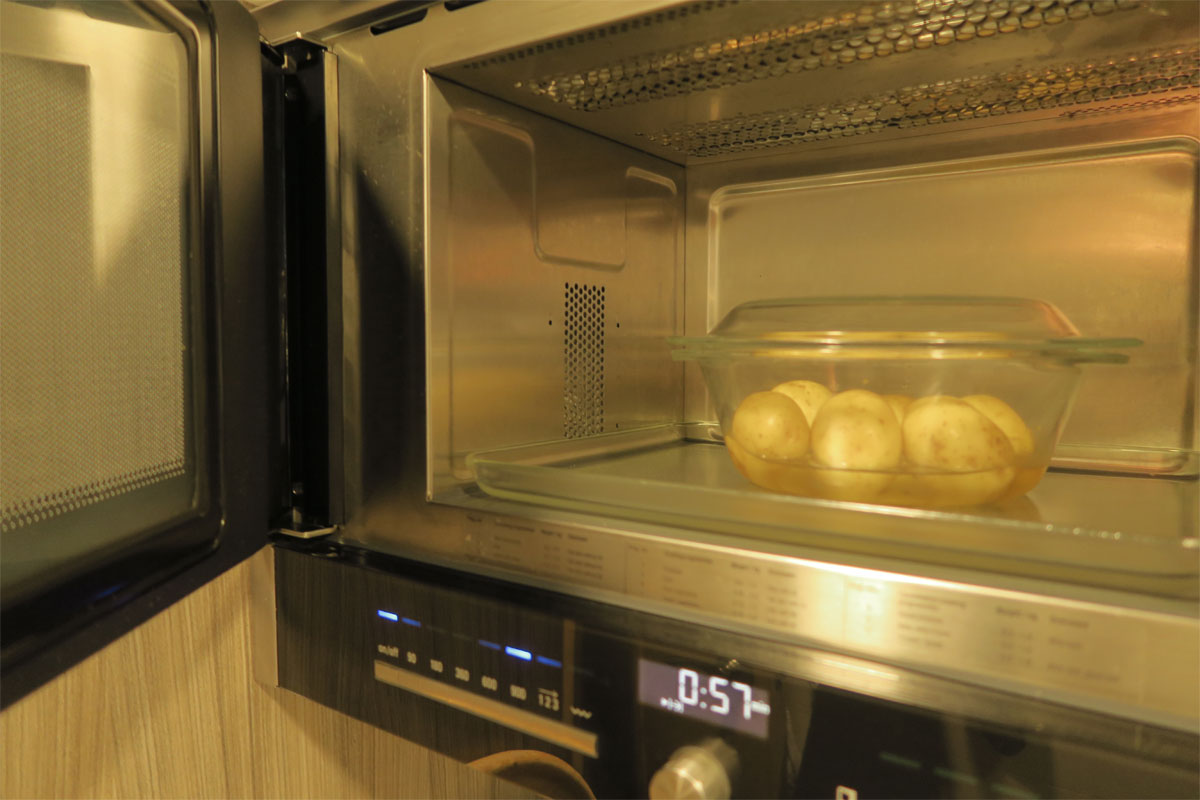Microwaving as technique
Microwaving is an effective way to defrost and to re-heat food. Microwave ovens apply a long wavelength radiation. At the opposite end of the radiation spectrum we find short wave length X- and Gamma-rays. The long wave length radiation is kept inside the microwave oven. It forms heat when the radiation hits water molecules. Avoid using metals in microwave ovens as the radiation will hit the metal instead of the water in the food and cause a lot of noise.
There are no side effects of the radiation from microwaving. As an example most of the indirect heat sources such as a fire, cause infrared radiation to transfer heat and we never complain about that. Infrared has a shorter wave length than microwaves. But I do not see much fun or purpose in using microwaves for culinary accomplishments. Only to defrost or heat up a bowl of soup. Please note that airplanes use microwave ovens abundantly to heat up pre-cooked food.
Some practical items
In general it is smart to cover the food that you are re-heating, not only to prevent drying out, but also to prevent ‘explosions’ of food that occur due to hot spots in thick soups or purees. Do not use plastic wrap as these may melt and even decompose and end-up in your dish. The best is a loose saucer or plate on top of a bowl.
When heating up butter to soften it or even melt it, be particularly careful: the butter is a water in oil (butter fat) emulsion and the microwaves will heat up the water mostly. Thus the emulsified droplets of water may convert into pressured cells of steam that can make your equipment quite messy, unless you use a proper cover. Even then you may hear these ‘explosions’.



